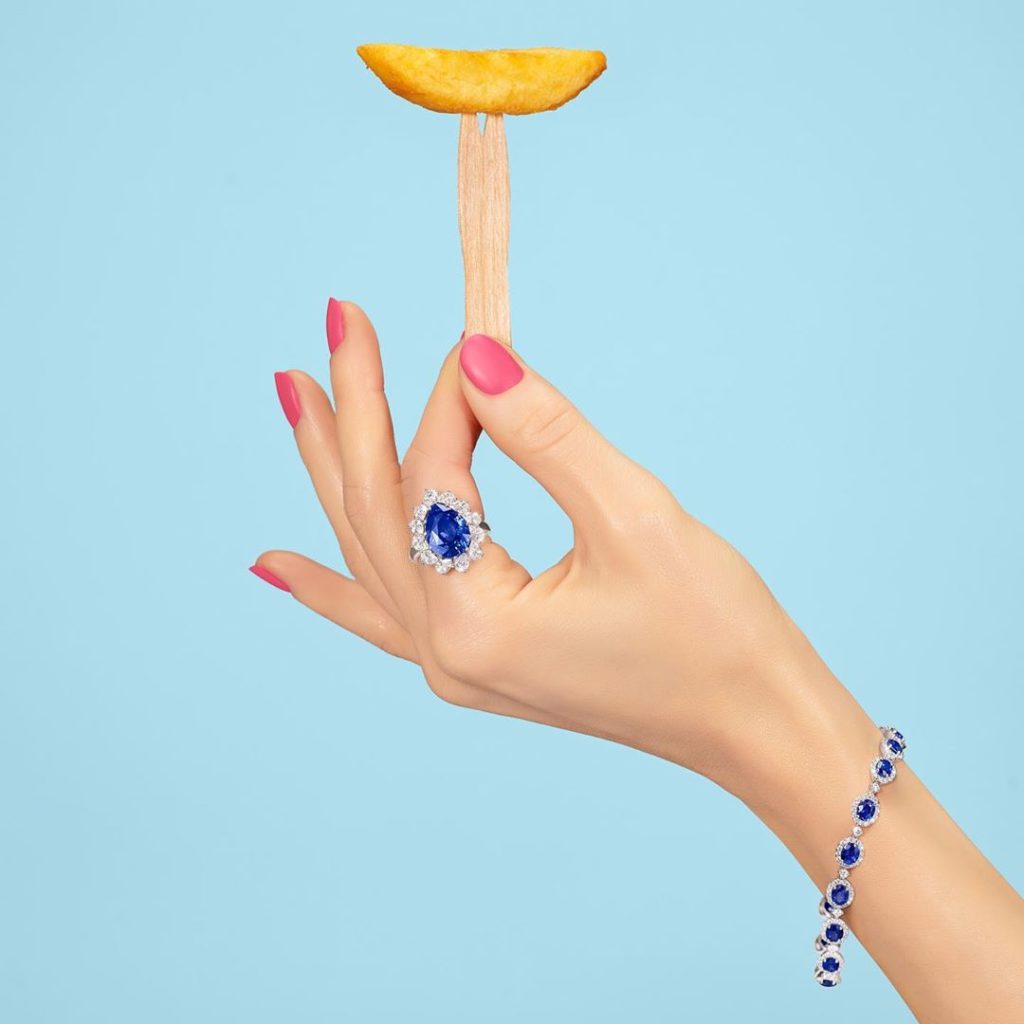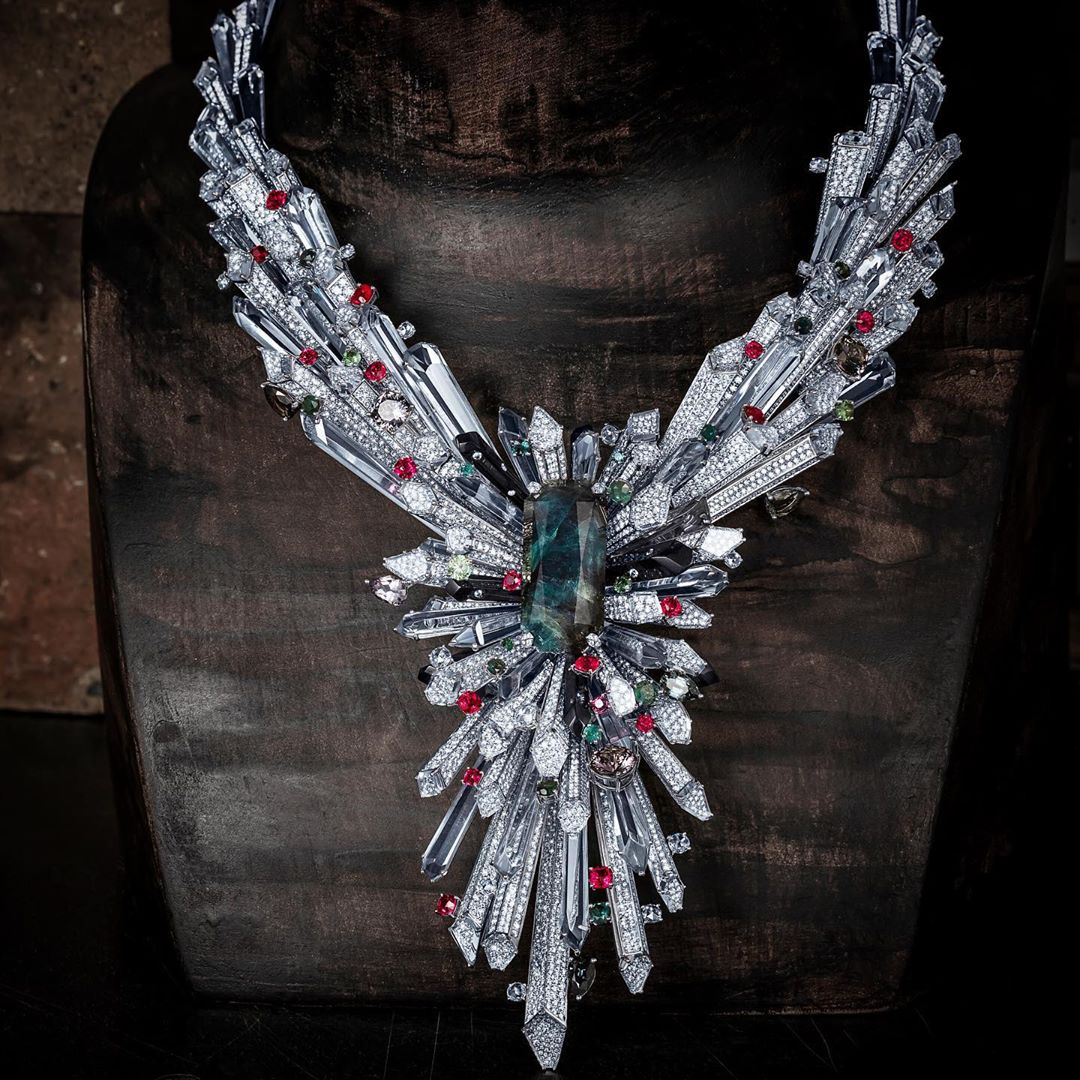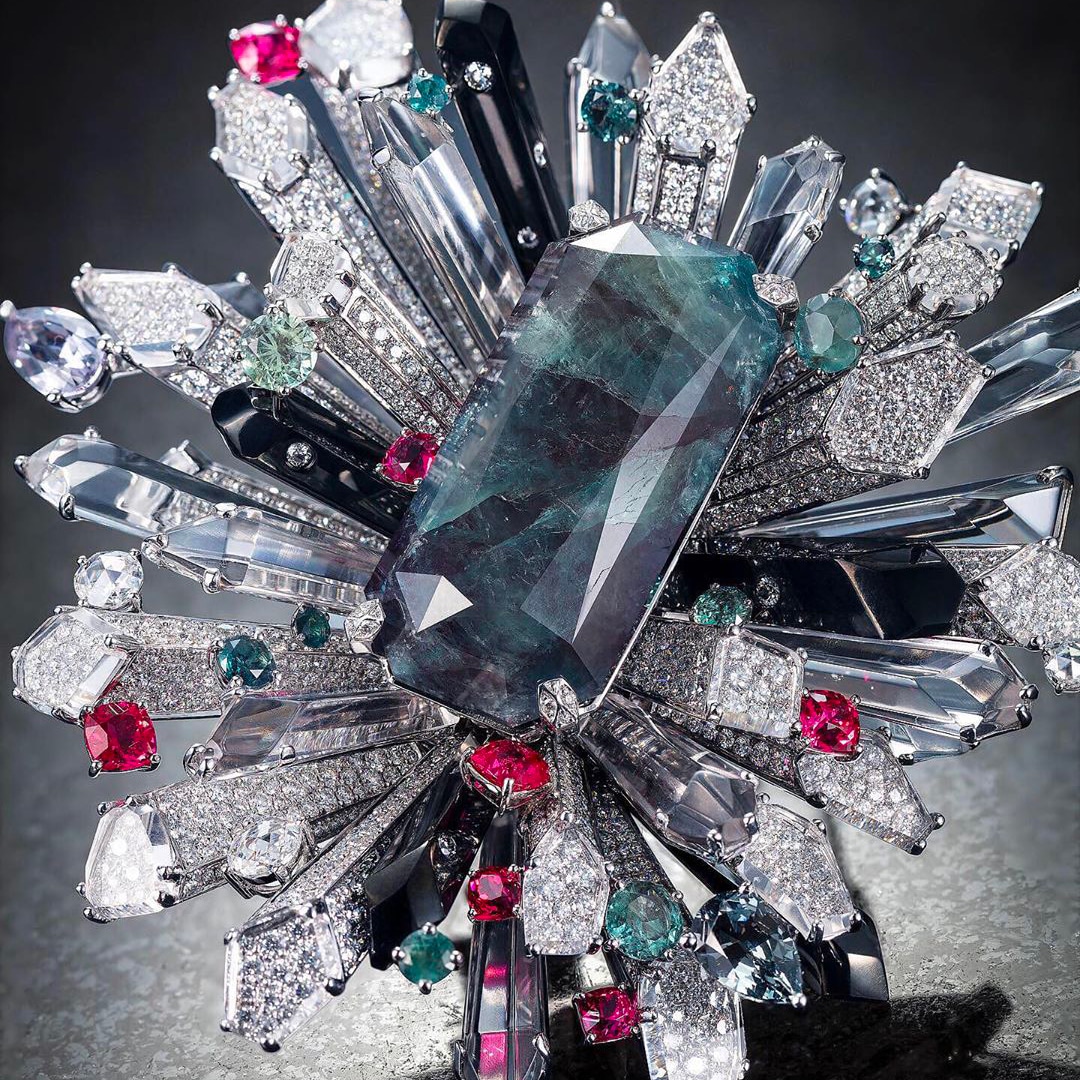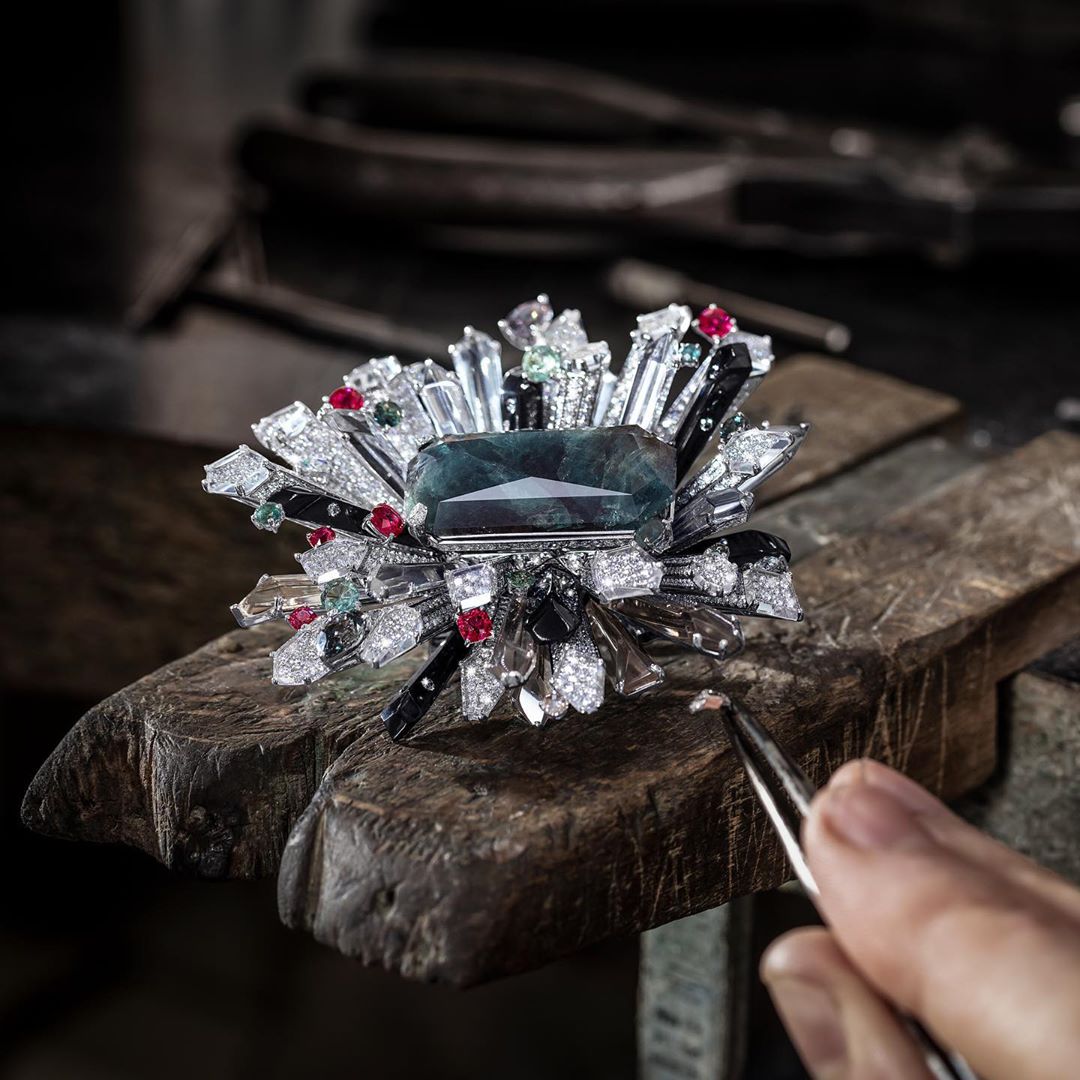THE ART OF DRAWING STORIES
LUXUS PLUS : RENDEZVOUS WITH THE ARTISTS
SIMON MARTNER : JEWELLERY PHOTOGRAPHER
From young designers to the Grandes Maisons, from his studio at London to the four corners of the world, from the delicate jewel to the imposing piece of several millions, Simon Martner, international photographer specializing in jewellery, sublimates each jewel since more than 10 years in the respect of the identity of the jeweler.
Today, he reveals for Luxus Plus some tips to meet the specific needs of this universe and to stand out in an era of visual overproduction.
How would you define a good jewellery photographer?
Generally speaking, a good photographer should know how to control light and reflection. Which is a major challenge when it comes to jewellery because stones and materials have many reflections. But it is also important to have knowledge and understanding of jewellery design. It is our responsibility to transform a 3D good into a 2D image, while preserving the beauty, quality and expensive character of the gem. Because with social networks, people are now overwhelmed by images. It is therefore extremely important to make the photo exceptional.
You have more than 10 years of career in jewellery. In view of your background, do you have any advice for young photographers?
Between my first and second year, I mass photographed in a robotic way to acquire knowledge. And I thought I had the perfect technique. It was the most boring time of my entire career. I had so much potential that I could improve but just couldn’t see it. And gradually I realized the interest of challenging myself. When I realized the importance of getting out of my comfort zone and the extent of the possible thanks to the many plays of positions and light, my work became more interesting. I was also able to show to the jewelers I work with that I take their needs very seriously. They spend months perfecting their designs. So when it comes to showcasing them, they want someone who is completely involved and who is committed to recreating a perfect image to enhance their creations. You are not there just to photograph. You can propose, exchange and bring your own artistic vision.
Do you use other artistic trends to enhance your photos?
I draw, I play music, I skateboard, I do a lot of analog photography. And I imagine, in one way or another, it influences my style. But, the drawing, that’s for sure. And I would say mostly analog photography. It helps bring freshness to the capture of a moment. Because many jewellery photographs are very controlled during their realization. It’s interesting to learn how to just capture the instant. And between my collaborations and the clients I meet, I am also inspired by the friendships I create around the world.
Speaking of that, you are an international photographer, how do you organize your shootings? How do you make yourself known?
Mainly by word of mouth. I haven’t advertised for many years. My clients also discover me via my Instagram account or in jewellery fairs. I also have a collaboration with the jewellery writer Katerina Perez, who is a known reference in the industry and who has introduced me to several clients around the world. But the majority of these are in London. The nature of London means that there are people from all walks of life who travel to this city. Then I move to where my clients are going. I have portable professional equipment and I easily set up a jewelry studio without the need for them to pay anything. It allows me to intervene anywhere.
Can you tell me about one of your projects or collaborations?
For several years, I have worked regularly with a British jeweler named Hirsh for their campaign and website. It is a very distinctive, very colorful House. Lately, we had photoshoots with the model Melissa Re and I worked with stylists to recreate a very English-style staging, playing with local customs, such as with tea or Fish and Chips.





What are you doing to keep improving?
I chose to take a scientific approach. My habit is to always test different angles, pictures-takings, lighting effects … and only make one change at a time while analyzing what is going on well in order to accurately understand each rendering. I’m well aware that 99% of people may find this technique boring, but I find it very interesting. This is my way of improving myself. This allows me today to be very quick when shooting with clients, while offering them several possible techniques and results.
The superpower of social networks requires mass creation of content that becomes obsolete as soon as it goes online. This process paves the way for a dazzling emergence of new photographers on the market, eager to be versatile (fashion, beauty, culinary, jewelers …) and breaking prices. With this comes a loss of qualitative artistic research, technical excellence or personalization.
What do you think of this issue and its future development?
I believe there will be a growing polarization between very specialized, very talented photographers and a mass market. Everyone has an Iphone, anyone can take pictures, which is perfect for some expectations. But the polarization will make it more complicated for photographers who are in between. Those who will not be among the best in their field and who do not wish to be underpaid will find difficult to position themselves against those who cut the prices.
In 2019, for the High Imperiale Collection by Rubeus Milano, you photographed the largest faceted alexandrite of the Urals recognized in the world. This jewel, mounted in an immense necklace of € 70,000,000 and set with multiple gems, is distinguished by a complex design in the form of an explosion of crystals. Can you tell us about the shooting of this creation?
I left London at 5am in the morning, arrived and went straight to the shoot in a secret location without aircon in a Parisian heatwave. We shot Friday and Saturday and delivered 60 retouched final photographs on Sunday evening for Rubeus presentation at Paris Fashion Week on the Monday. We had no leeway in case of problem. Everything had to be perfect quickly. And the alexandrite itself is a challenge because the nature of the stone causes a change color at a certain temperature of light, going from dark green to purple. However, we had to reveal properly the extent of its nuances. It was a challenge I had never faced before.
But in the end, the challenge is above all to take a beautiful photo while capturing the essence of the jewel. Whether the latter is an imposing and complex piece or a more modest gem, the concept remains the same. The objective is to compose a sparkling rendering, to capture the details and to create an atmosphere which sublimates the jewel. Concretely, there is no real difference in the process. It just takes a lot more time.
In view of all these years of expertise in photography, do you think you are opening up your fields of possibilities?
During the confinement, I got involved in a big personal project. It consists of 8 photo albums, also including my drawings and my notes during my travels, shootings and meetings. It’s kind of my 19- year-old diary so far. It was fun to do. From a more professional point of view, I also do seminars and sometimes I teach. But I have to admit that what makes me the happiest is continuing to photograph for my clients, wherever they are in the world.



The photographs are the property of Simon Martner.
Article for Luxus Plus magazine.